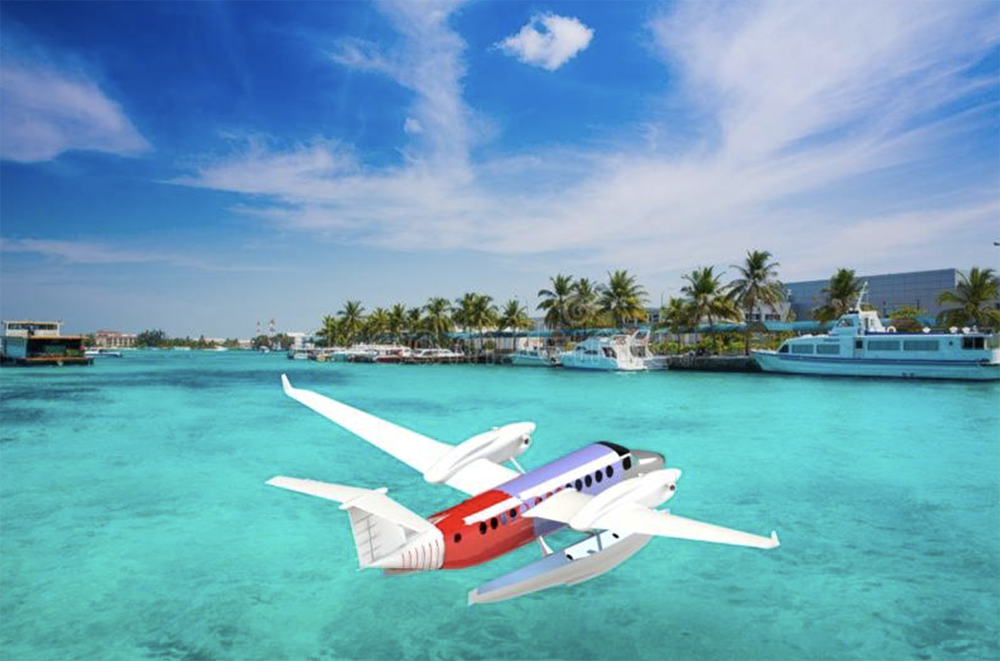KU aerospace engineering students earn international design awards
LAWRENCE — Aerospace engineering students from the University of Kansas collected three awards in two major international design competitions, adding to the school’s record number of such honors.

Students finished first and third in the American Institute of Aeronautics and Astronautics’ Undergraduate Individual Design Competition for their designs of efficient aircraft that can land or take off using either land or water.
In addition, a team of six students finished second in the AIAA’s Graduate Team Missile Design Competition for a missile featuring new modular design and innovative propulsion.
During that past decade, 125 aerospace engineering students have collected awards in international design competitions, said Ron Barrett-Gonzalez, professor of aerospace engineering. The three awards are numbers 100, 101 and 102 won by Jayhawks since 1980.
“We’re the first in the world to achieve 100, and that’s big,” said Barrett-Gonzalez, who served as faculty sponsor for the students’ entries. “A lot of companies look at this and know that they are getting good, strong, all-around students they can move around seamlessly. They stand out.”
AIAA is the world’s largest aerospace technical society, with nearly 100 corporate members and an additional 30,000 individual members from 91 countries. The annual design competitions give students a chance to solve design problems requiring specialized technical solutions, allowing students to perform theoretical work and gain real-world insight into the design process.
Daniel Pacheco won first place in Undergraduate Individual Aircraft Design for his design and analysis of “Little Goose,” an “amphibian” airplane capable of connecting communities both on land and adjacent to water. In the congested Bay Area of California, for example, the plane would be able to haul commuters from Sacramento to San Francisco without ever touching an airport.
“You could land on the water right off Pier 39 — hopefully avoid the tourists — and go right to work,” Barrett-Gonzalez said.
The commute might sound simple, but the design and analysis behind the Pacheco’s NEWT (New Efficient Water and Terrestrial aircraft) covered 76 pages filled with drawings, calculations, theories, history, graphics, weight ratios and more. As envisioned, the Little Goose would be able to carry up to 20 passengers at speeds of up to 185 miles per hour.
Pacheco graduated in December 2022 and now works as an aerospace engineer for Avcon Industries, which designs and performs modifications for special-mission and ISR (intelligence, surveillance and reconnaissance) aircraft as a subsidiary of Butler National Corp.
Also in the Undergraduate Individual Design Competition, Riley Schwartzhoff won third place for his entry “Frog Hopper,” another NEWT concept deigned to skim above the water efficiently for both fuel and time while protecting the environment and wildlife both in the air and underwater.
In the Graduate Team Missile Design Competition, a six-member team devised the AIGM-138 Chimera, a tube-launched, modular weapon. Its propulsion assembly is designed to both shrink the size of such weapons by up to 30% while increasing their ranges and while enabling top speeds approaching four times the speed of sound. The team — Adam Andresen, Kang Chen, Jonas Knickenberg, Chukwuemeka Mba, Nicholas Sandusky and Muhammad Yakawu — have patents pending, both in the U.S. and internationally.
“Design is like the decathlon of aerospace engineering,” Barrett-Gonzalez said. “You can’t only be good at structures, or aerodynamics, or stability and control, or propulsion. Our students are known in the industry for being great all-arounders, and this gives them a leg up applying for jobs and graduate school.”
Image: The “Little Goose” design by a KU graduate won first place in Undergraduate Individual Aircraft Design category of the American Institute of Aeronautics and Astronautics’ Undergraduate Individual Design Competition.